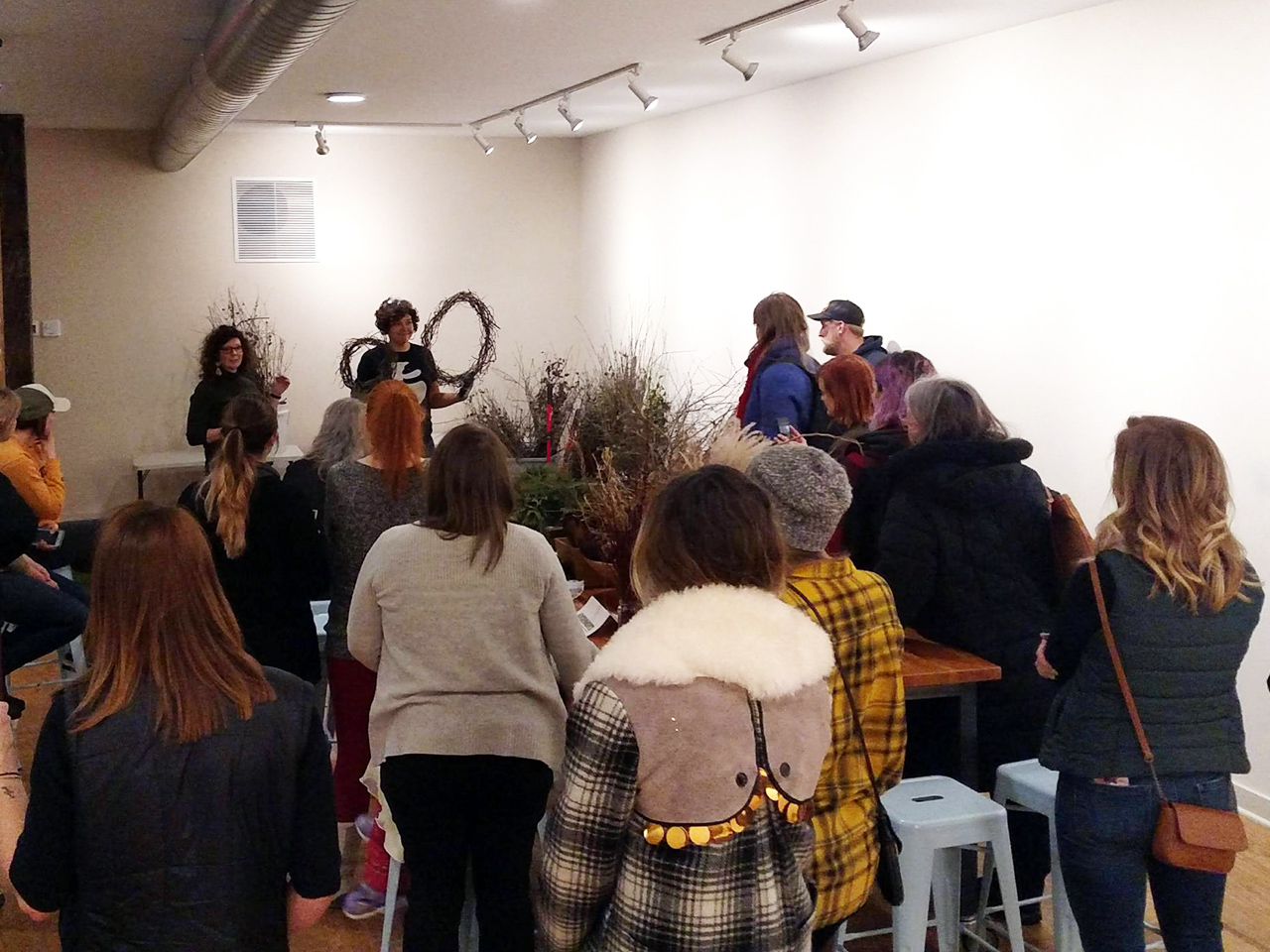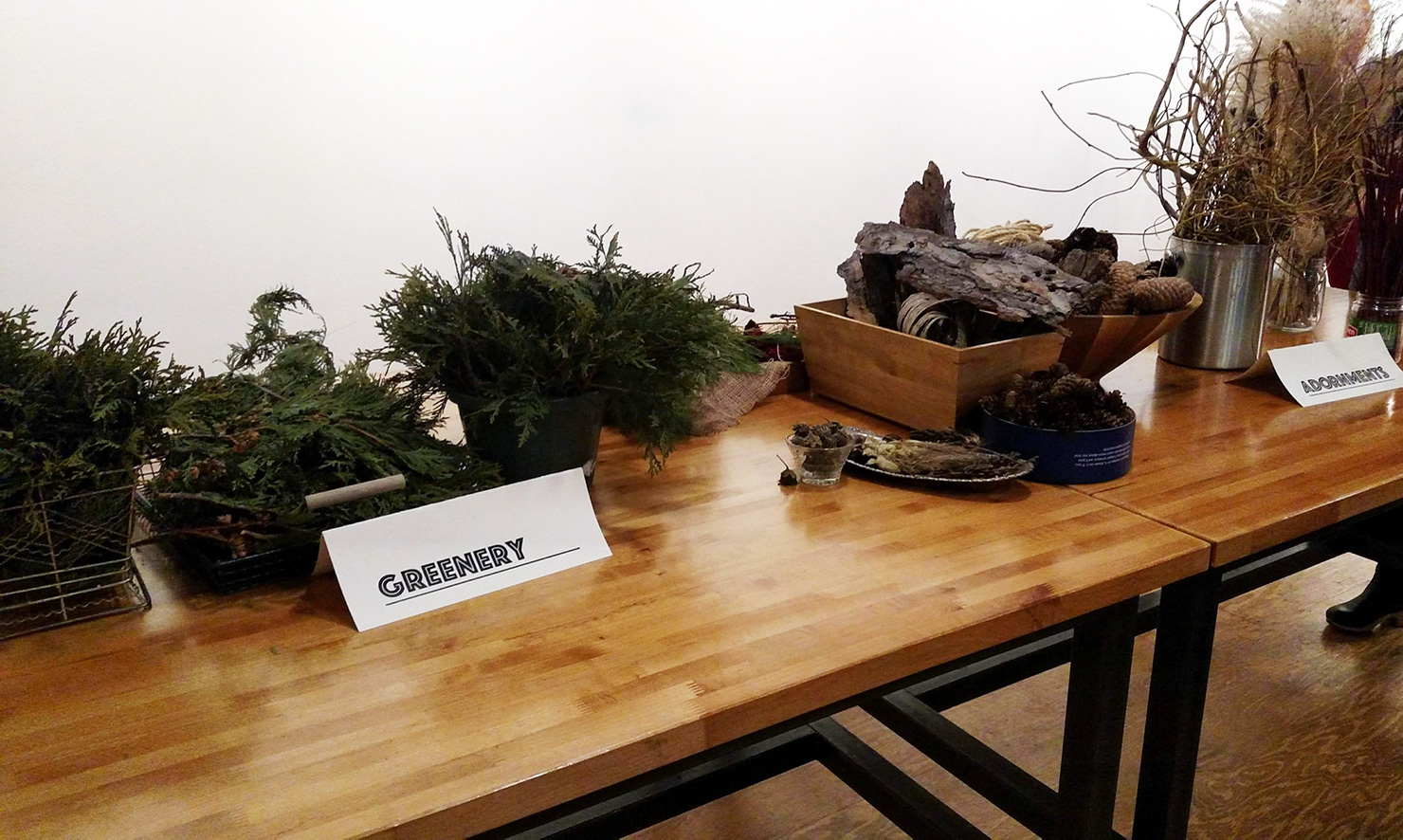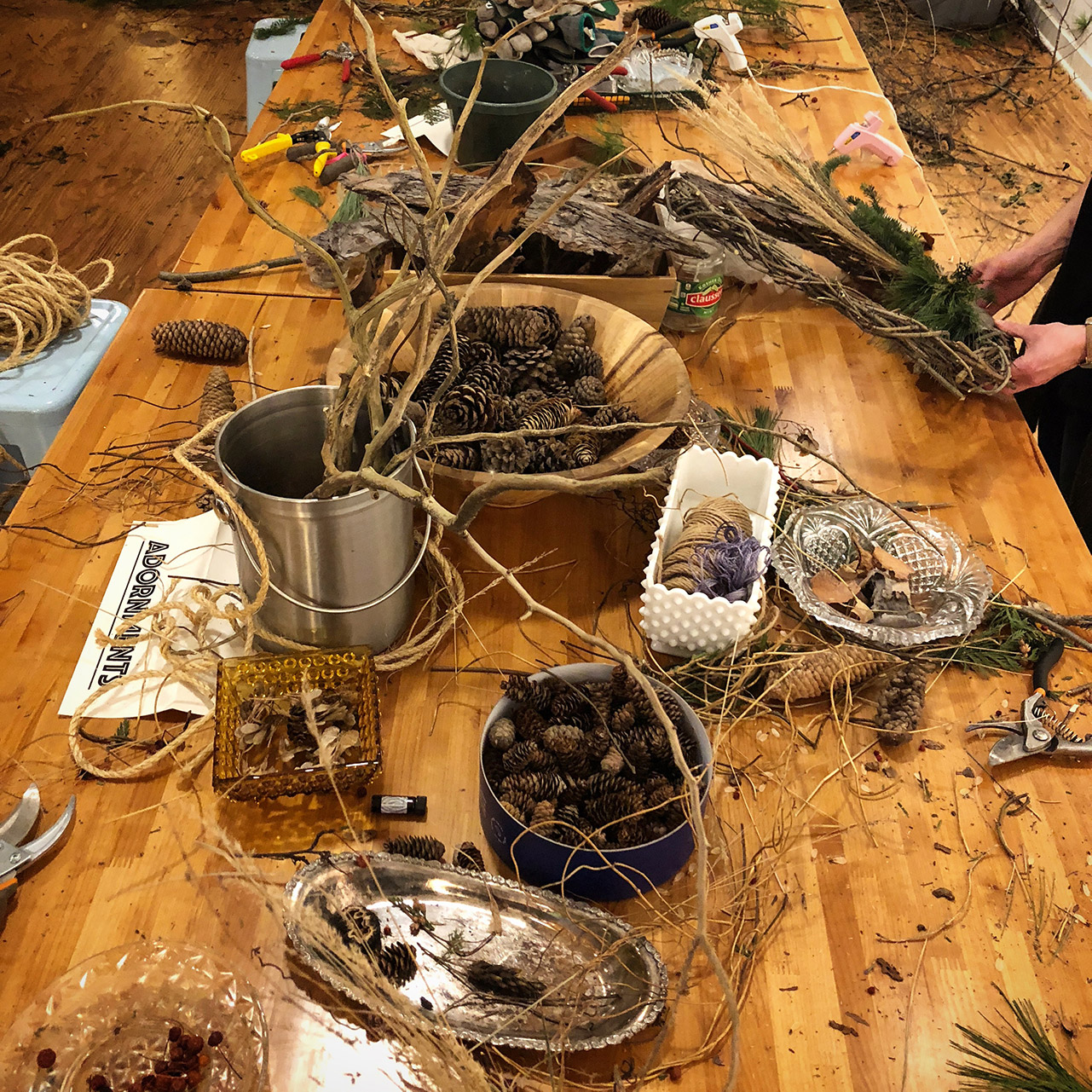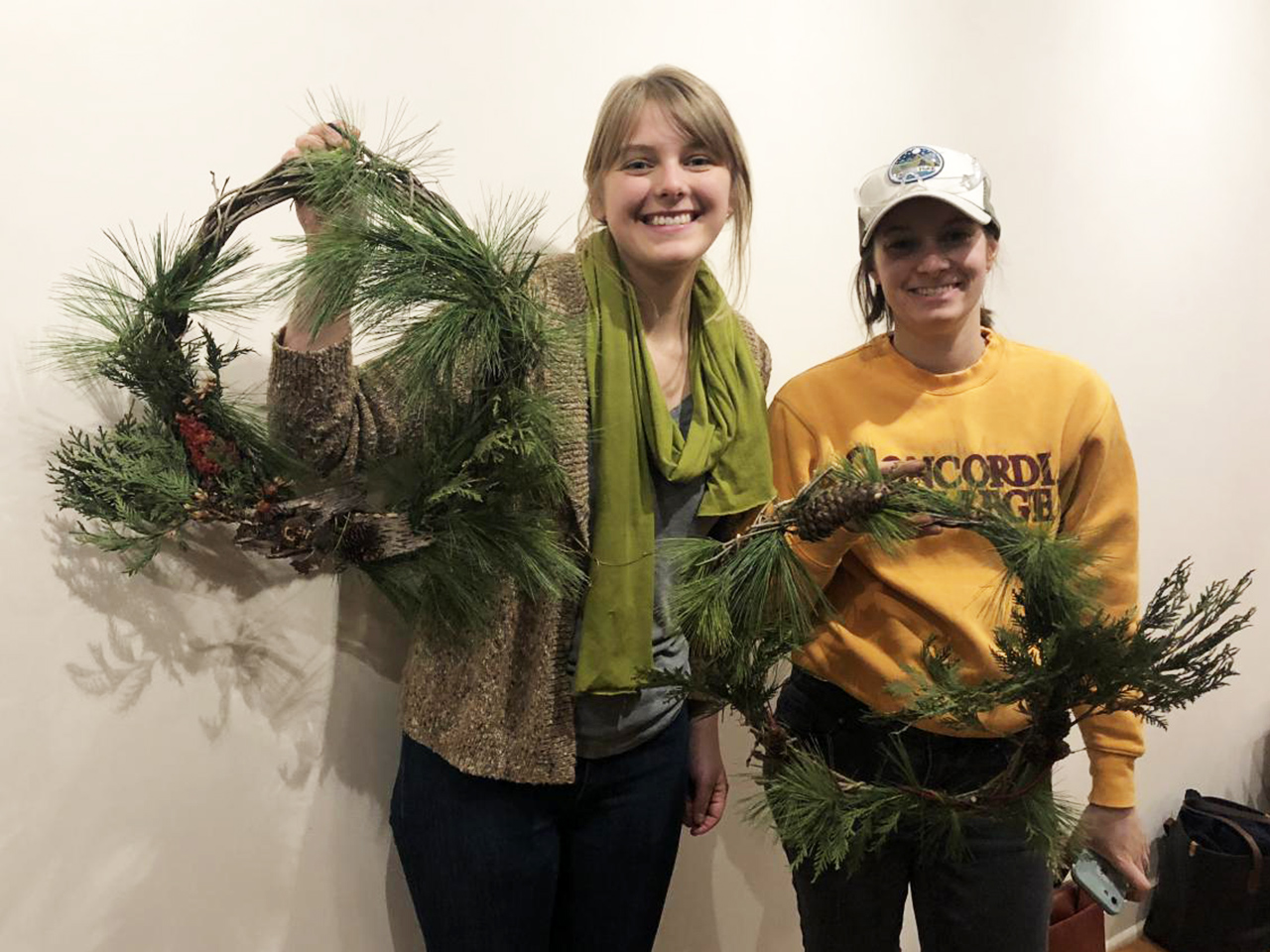First buckthorn wreath-making workshop a success
Two workshop participants display their buckthorn wreath creations. (Photo by Shanai Matteson for Water Bar & Public Studio)
On a cold December evening, 30 eager attendees gathered together at Water Bar & Public Studio in Northeast Minneapolis. In the center of the warm, inviting space was a table full of natural ornaments: pine cones, pine boughs, berries, grasses and other woodland items. These pieces would soon adorn the wreaths participants had come to make.
But first, attendees needed to weave and loop their wreaths' bases. And for that we provided an invasive plant that’s common throughout the Twin Cities: buckthorn.
 Buckthorn wreath-making workshop participants watch as artists and FMR volunteers Kim (standing, center left) and Emily (center right) demonstrate technique.
Buckthorn wreath-making workshop participants watch as artists and FMR volunteers Kim (standing, center left) and Emily (center right) demonstrate technique.
What happens when creative volunteers put their heads together
Local artists Emily Sauer and Kim Boustead, both longtime FMR volunteers, hatched the basic idea for this event at our early fall buckthorn-lopping event at Mississippi Gorge Regional Park. They worked with me to brainstorm ways we might use buckthorn in a creative way, and to call attention to the destruction invasive species can cause for wildlife habitat and water quality.
They were keen to host an event that could demonstrate fun ways to use this ubiquitous invasive plant in art, and we were all keen to tie in an educational component so people could learn more about buckthorn and how best to control it.
We soon came up with the idea for an open studio wreath-making workshop, and Water Bar & Public Studio and its co-collaborative director Shanai Matteson graciously offered to host.
Where did the buckthorn come from?
To gather the abundance of buckthorn needed to create the wreaths, Kim and Emily volunteered at FMR’s big fall buckthorn haul at Pine Bend Bluffs Natural Area.
There, they clipped the malleable ends off of hundreds and hundreds of buckthorn branches hauled by the more than 80 volunteers. (Don't worry, they didn't aid the spread of these plants — they only clipped and used branches without berries.)
 The full table of greenery and other wreath adornments collected by Kim and Emily.
The full table of greenery and other wreath adornments collected by Kim and Emily.
Our first invasive species art workshop
The night of the event, 30 people showed up to make buckthorn wreaths. After my 10-minute presentation outlining buckthorn’s natural history, its negative effects on areas where it spreads and some ways to control the plant, participants got to work bending, twining, wrapping and gluing buckthorn and various natural treasures into artistic masterpieces big and small. (Curious about the buckthorn presentation? Check out our article on how a shrub can be so harmful and download our buckthorn flyer.)
The evening was a great success. We met lots of people new to FMR's conservation and restoration work. Many attendees told us they didn't know much about buckthorn before, and they’d certainly never made a wreath out of it. (Though one attendee had made spoons out of buckthorn wood!)
For the future
FMR hopes to collaborate on more events like this with Kim and Emily. In 2019, we plan to hold more open studios focused on different invasive plants. This series will continue to raise awareness about invasive species while engaging the community in participatory art.
 The aftermath of the buckthorn wreath-making adornment table put together by artists Kim and Emily. (Photo by Shanai Matteson for Water Bar & Public Studio)
The aftermath of the buckthorn wreath-making adornment table put together by artists Kim and Emily. (Photo by Shanai Matteson for Water Bar & Public Studio)
A note of caution about invasives
With any invasive species, it’s important to be aware of the risk of spreading seed or reproductive plant parts, and of proper disposal methods. Our buckthorn wreaths didn’t pose any ecological threat, as the twigs didn’t contain berries and won’t re-sprout to form new plants.
However, even normal holiday wreaths aren’t without risks. This year, inspectors in Wisconsin, Minnesota and the Dakotas have reported the presence of an invasive pest on wreaths and other greenery sold at big-box retail chains. The Elongate Hemlock Scale (EHS) is a tiny insect native to Asia that has been found on wreaths imported from North Carolina. EHS feeds on evergreens and can damage trees, including widespread Minnesota species like spruce, fir and hemlock.
In order to stop the spread of this pest, the Minnesota Department of Agriculture and other organizations recommend that residents burn their wreaths or tree and dispose of them.
And for next year, if you do purchase holiday greenery of any kind, try to find locally grown options to avoid any introduction of invasive insects.
Join us next time
For those that missed out on the event, keep an eye on FMR's events calendar for future invasive species art workshops and other ways to get involved with FMR.
